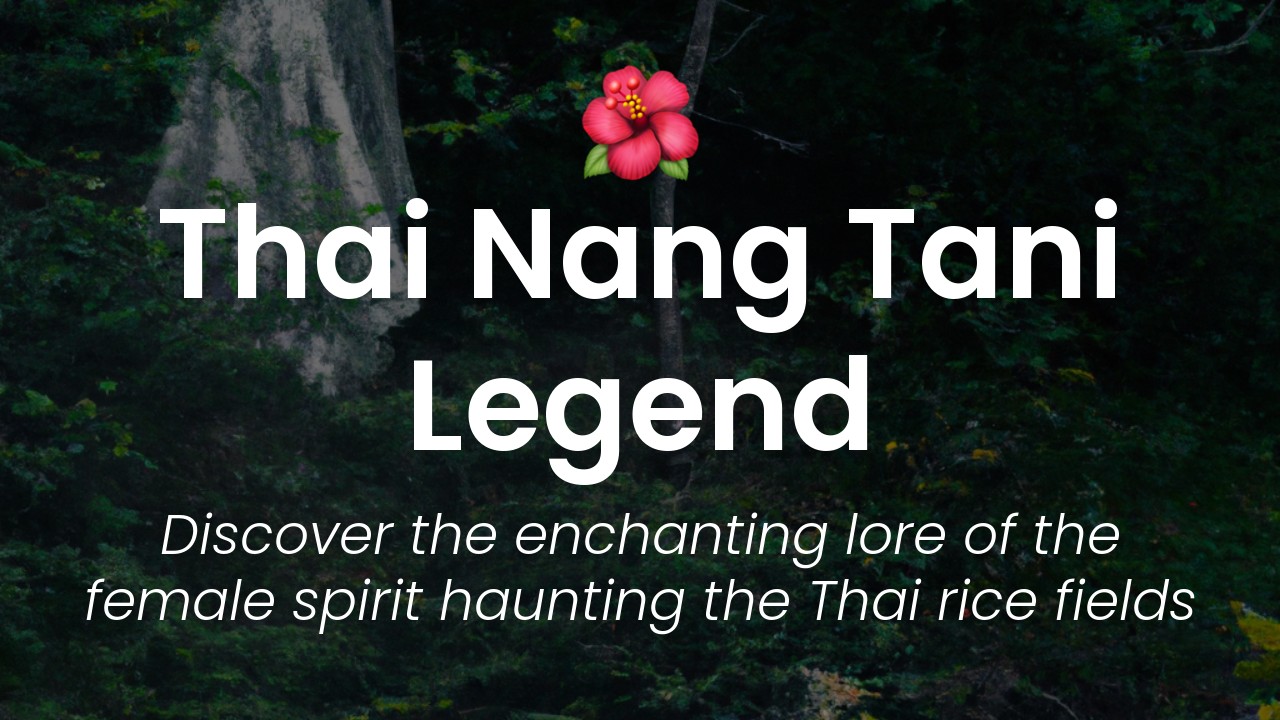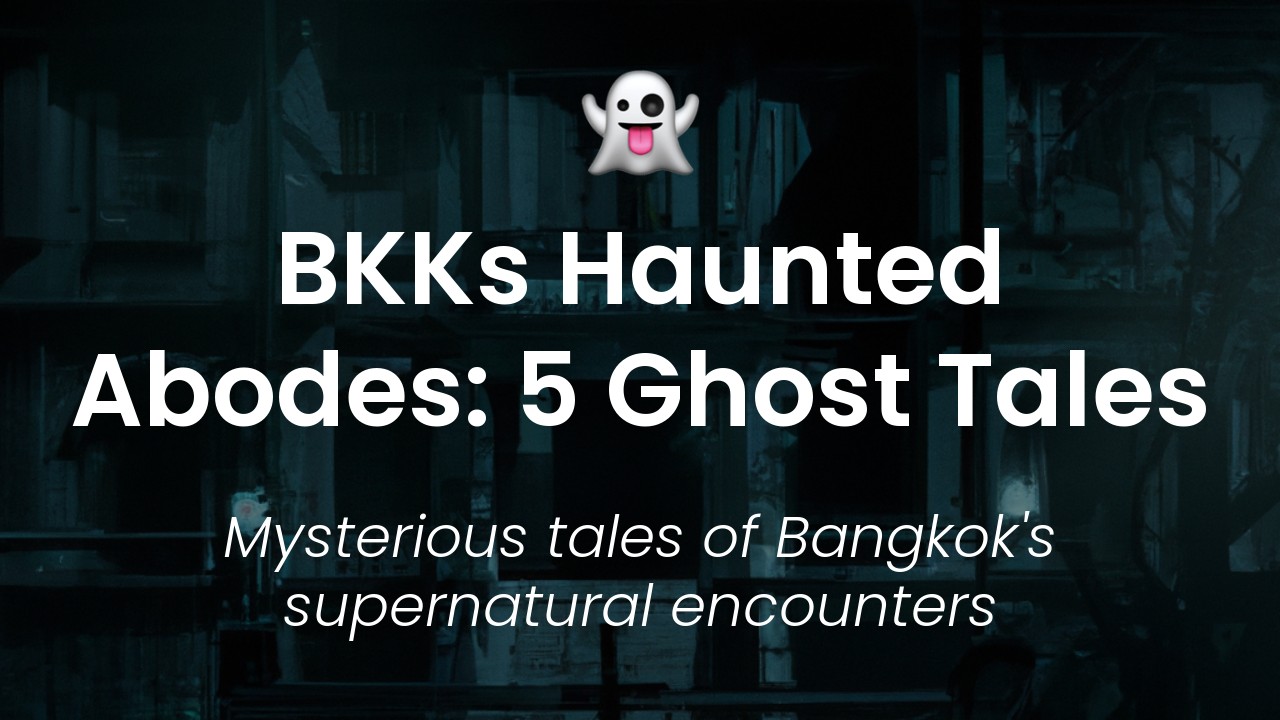As a Thai woman, I have grown up with a rich culture and traditions that have been passed down from my ancestors. One thing that has always captivated me is Thai folklore tales. These stories are filled with magic, love, and adventure that have been shared amongst generations of people in Thailand. They are a way of keeping the country's history and heritage alive and are still celebrated today.
In this article, I'm excited to share with you some of the best-kept secrets of Thai folklore tales. I want to give you an insight into the enchanting narratives that have been a part of my life since I was a child. I believe that by sharing these tales, I can help you experience Thai culture like never before and take you on a journey through the mythical world of Thailand.
From the story of the Naga, a serpent-like creature that is believed to be the protector of the rivers, to the legend of Mae Nak, a female ghost who returns to haunt the living, the Thai folklore tales are both fascinating and intriguing. Through storytelling, I will bring these tales to life and show you why Thai folklore has become an integral part of daily life in Thailand. So, sit back, relax, and let me take you on a journey through Thailand's best-kept secrets.
Origin stories and creation myths
Thai folklore is full of tales of the mythical creatures and gods who once roamed the land. These legends have been passed down from generation to generation and offer a look into the country's rich history and culture. One of the most popular stories in Thai folklore is the creation myth, which describes how the world was formed.
According to Thai mythology, at the beginning of time, there was only a large ocean with a great serpent, or Naga, living deep within its waters. The Naga was believed to be a powerful and wise being, and its presence helped to maintain balance in the universe. One day, a god named Phra Isuan, also known as Shiva in Hindu mythology, descended from the heavens and landed on the back of the Naga. From this point, Phra Isuan created the first humans, and the world as we know it slowly began to take shape.
Another popular myth in Thai folklore is the story of the creation of Bangkok, the capital city of Thailand. The legend goes that in the late 1700s, the city was formed by King Rama I, who ordered the construction of a new capital on the eastern bank of the Chao Phraya River. However, before the city could be built, the king had to perform a sacred ceremony to call upon the gods and ask for their blessing. During the ceremony, he released a golden conch shell into the river and watched as it disappeared into the depths. After a few moments, the shell reappeared, and the king took it as a sign that the gods had granted their approval. And so, the city of Bangkok was born.
The legend of Mae Nak and her undying love
Mae Nak is one of the most popular figures in Thai folklore, and her story has been told countless times through plays, movies, and even a television series. The tale is set in the early 1800s and revolves around a couple named Mae Nak and Mak. The two were deeply in love and had just welcomed their first child into the world when tragedy struck.
Mak was drafted into the military and had to leave Mae Nak behind. While he was away, she fell ill and died during childbirth. However, unbeknownst to Mak, her spirit remained in their home, and she continued to live as if nothing had happened.
When Mak returned home, Mae Nak was overjoyed to see him, but he was shocked to learn that she had died many months earlier. Mae Nak's ghostly presence frightened the villagers, who begged Mak to leave the house and never return. But his love for Mae Nak was undying, and he refused to leave her side.
The story of Mae Nak is a tragedy that has been immortalized in Thai folklore. It speaks to the power of love and the lengths that people will go to be with the ones they love.
The mischievous creatures: Nang Ta-khian and Phi Kong Koi
Thai folklore is full of tales of mischievous creatures that roam the countryside. Two of the most famous are Nang Ta-khian and Phi Kong Koi.
Nang Ta-khian is a ghostly tree spirit that is said to inhabit the ta-khian tree, a species of tree that is found throughout Thailand. The spirit is known for its beauty and seductiveness, and many men have fallen victim to its charms. According to legend, if a man comes across a ta-khian tree, he should always ask for permission before cutting it down, or else he risks summoning the wrath of Nang Ta-khian.
Phi Kong Koi, on the other hand, is a little-known creature that is said to dwell in the forests of northern Thailand. The creature is described as a small, impish creature with a long, curved nose and sharp claws. It is known for playing tricks on humans, such as stealing food and hiding objects. According to legend, the only way to get rid of Phi Kong Koi is to leave offerings of food and drink in the forest.
The adventures of Prince Apaimanee and Nang Suang
Another popular story in Thai folklore is the tale of Prince Apaimanee and Nang Suang. The story is set in ancient Siam and tells of the adventures of a young prince who is sent on a quest to find a mystical jewel that has the power to restore peace to the kingdom.
Along the way, the prince meets a beautiful and intelligent woman named Nang Suang, who is also on a mission to find the jewel. Together, they embark on a journey that takes them through forests, rivers, and mountains, all while battling dangerous enemies and overcoming incredible obstacles.
In the end, the two are successful in their quest and return to their kingdom as heroes, having saved their people from certain doom.
The mythical creatures: Garuda and Naga
Garuda and Naga are two of the most well-known creatures in Thai folklore. Garuda is a mythical bird that is believed to be the king of birds and the mount of Lord Vishnu in Hindu mythology. It is depicted as a large, brightly colored bird with a sharp beak and powerful talons. In Thai folklore, Garuda is said to be a protector and a symbol of good luck.
Naga, on the other hand, is a powerful serpent or dragon that is believed to have the ability to control the weather and the elements. It is often depicted with a human head and a serpent's body and is regarded as a symbol of fertility and creative power.
Both Garuda and Naga play important roles in Thai mythology and are depicted in numerous works of art and literature.
The significance of folklore in Thai culture
Folklore plays an essential role in Thai culture and has helped to shape the country's rich history and traditions. Through these tales, people learn about their ancestors, their values, and their beliefs. They also serve as a way to connect the country's past with its present.
Thai folklore is a treasure trove of enchanting stories that have been passed down from generation to generation. Whether it is the tales of mythical creatures or the stories of undying love, these tales continue to capture the imaginations of people around the world and showcase the unique culture and traditions of Thailand.







